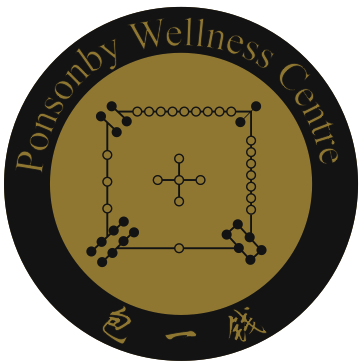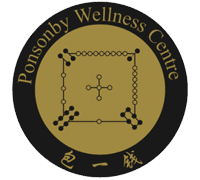Stroke Hemiplegia and the Role of Acupuncture in Recovery
Stroke is a leading cause of disability worldwide and is associated with a high risk of death. Survivors after stroke often experience loss of vision, speech, confusion, and muscle paralysis (face, arms and legs). Every year, more than 15 million people suffer from stroke, where 1/3 contribute to death rates, and another 1/3 survivors have permanent disability.
One of the most common and challenging outcomes of stroke is hemiplegia (paralysis of one side of the body). This condition impairs the person’s ability to perform daily activities, such as writing, walking, speaking, and so on, leading to a reduced quality of life. Recently, acupuncture practices rooted in Traditional Chinese Medicine have shown promising complementary therapy to improve stroke patients’ recovery.
What is Stroke Hemiplegia
Hemiplegia is the paralysis or weakness of muscles and occurs on one side of the body, affecting the arms, legs and facial features. Hemiparesis can be caused by stroke, where there is a sudden interruption of blood circulation in parts of the brain, leading to brain cell death and damage. As the brain is partially responsible for motor pathways that control movements, a disturbance in the brain causes movement abnormalities, resulting in hemiplegia.
Why does a disruption of blood flow cause stroke?
Usually, blood is responsible for constantly supplying oxygen and nutrients to many organs, including the brain, and ensures that the brain is receiving nourishment to perform adequately. When there is a blockage or decreased blood flow in the brain, parts of the brain fail to receive the nourishment it needs, and brain cells will eventually die. Consequently, the brain that controls body movements becomes dysfunctional, leading to paralysis.
The brain is divided into multiple regions responsible for controlling different body functions. For example, a stroke on the right side of the brain will affect the left side of the body and vice versa. If the stroke occurs towards the back of the brain, it may result in vision loss. An image of the functions of the brain below illustrate the different regions of the brain and its corresponding functions.
Hemiplegia occurs when a stroke damages the brain’s motor pathways that control voluntary movements. The severity of hemiplegia can vary depending on the extent and location of the brain damage. This paralysis can affect the arm, leg, and facial muscles on one side of the body, leading to difficulties in movement, coordination, and balance.

There are different types of stroke:
- Ischaemic stroke- when a clot is formed in the blood vessel, obstructing blood flow to the brain. This constitutes the majority of stroke causes.
- Hemorrhagic stroke- this is when the blood vessel ruptures, causing bleeds and is common in individuals with high blood pressure.
- Transient ischaemic attack(TIA)/mini-stroke- a temporary clot causes this. Individuals experiencing TIA should take this as a warning sign for stroke seriously.

Rehabilitation for Stroke hemiplegia
The road to recovery from hemiplegia is often long and requires a multidisciplinary approach. Conventional rehabilitation therapies, such as physical therapy, occupational therapy, and speech therapy, are the mainstays of treatment. However, there is growing interest in integrating alternative therapies like acupuncture into stroke rehabilitation programs to enhance recovery outcomes.
The science behind acupuncture
Acupuncture is a therapeutic practice that includes placing small needles into particular locations on the body called acupoints. According to Traditional Chinese Medicine, these acupoints are located along meridians or routes via which the body’s vital energy, or “Qi,” flows. Acupuncture is said to restore Qi balance by stimulating these sites, which promotes healing and relieves various diseases.
According to modern medical theory, the effects of acupuncture include complicated neurophysiological systems. According to research, acupuncture may influence the central and peripheral neural systems by regulating the release of neurotransmitters and neuropeptides involved in pain perception, inflammation, and tissue repair. Acupuncture has also been demonstrated to enhance blood flow to specific locations to reduce oxidative stress and promote neuroplasticity.
How Acupuncture Can Help Stroke Hemiplegia
- Improving Motor Function: Acupuncture has been studied for its potential to enhance motor function in stroke patients with hemiplegia. Some studies suggest that when combined with conventional rehabilitation, acupuncture can improve muscle strength, coordination, and overall mobility. One study highlighted the potential for acupuncture to improve limb movement (Wang et al., 2020). Thus, stimulating specific acupoints promotes the recovery of damaged neural pathways and facilitates the brain’s ability to relearn motor skills.
- Reducing Muscle Spasticity: Muscle spasticity, characterised by involuntary muscle stiffness and contractions, is common in stroke survivors with hemiplegia. Acupuncture may help reduce spasticity by modulating the nervous system’s response to stimuli. In a study by Wang et al. (2021), the result showed that acupuncture was able to alleviate muscle spasticity and reverse motor deficits by activating the KCC2-GABAa pathway (which regulates neurotransmission). By targeting acupoints that influence muscle tone, acupuncture can help relax muscles, increase flexibility, and improve the range of motion in the affected limbs.
- Alleviating Pain and Discomfort: Pain, particularly in the shoulder and affected limbs, is a frequent complaint among stroke patients with hemiplegia. Acupuncture’s analgesic effects are well-documented, and it may provide relief from both acute and chronic pain. The insertion of needles at specific acupoints can trigger the release of endorphins, the body’s natural painkillers, and reduce the perception of pain.
- Enhancing Mental Well-being: The emotional and psychological impact of stroke and hemiplegia cannot be overlooked. Many stroke survivors experience depression, anxiety, and frustration due to their physical limitations. Acupuncture has been shown to positively affect mental health by reducing stress, improving mood, and promoting a sense of relaxation. This psychological support can motivate patients to engage actively in their rehabilitation.
- Complementary to Conventional Therapy: While acupuncture is not a standalone treatment for stroke hemiplegia, it can be a valuable complement to conventional therapies. Integrating acupuncture into a comprehensive rehabilitation plan can offer a holistic approach to recovery, addressing both physical and emotional healing aspects.

Contact Us
You can also book an appointment with our expertise acupuncturist here
Contact us via:
phone number: 021 2159963
email address: ponsonbywellness@gmail.com
or visit the contact us page
Our Location
57 Sussex St,
Ponsonby,
Auckland 1021


